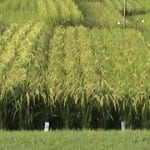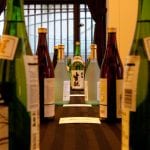What’s Happening in the Sake World in Japan
Sake Tax Down, Wine Tax Up
 Some fairly significant alcohol tax changes are afoot in Japan. And they will benefit sake domestic consumers in a good way. Sure, the savings to us that result from these changes will be moderate. And in fact, they will likely be offset by inflation, especially since they will kick in slowly over the next few years. But still, we’ll take what we can get.
Some fairly significant alcohol tax changes are afoot in Japan. And they will benefit sake domestic consumers in a good way. Sure, the savings to us that result from these changes will be moderate. And in fact, they will likely be offset by inflation, especially since they will kick in slowly over the next few years. But still, we’ll take what we can get.
In short, alcohol tax that the brewer pays to the government is going down for sake, but up for wine. When all is said and done, the tax will be the same on both beverages.
The tax on sake is the same for all grades of sake. While this was not the case before 1989, when higher grades commanded higher taxes, currently, the tax on all sake irrespective of grade or anything else is 120 yen a liter. On wine, however, it is 80 yen a liter. In the fall of 2020 this will change to 110 and 90 respectively, and from the fall of 2023 both sake and wine will be taxed at 100 yen a liter.
Admittedly, this is way out on the time horizon. And furthermore, it is about a 14 yen decrease on a 720ml bottle. By that time, much will have changed and the gains may be absorbed by inflation or a myriad of other influences. But hopefully it will benefit the industry at least a little bit.
One final note: sake that is exported is not subject to that alcohol beverage tax. So sake fans outside of Japan would never see what little benefits there might be.
Kaganoi Brewery Burns Down
 On December 22nd of last year, there was a massive fire in the city of Itoigawa in Niigata Prefecture. In total, 144 buildings were damaged or destroyed. Miraculously, no one died, although 11 were injured. It was a reminder of just how devastating fire can be in small village towns comprised of many old wooden buildings.
On December 22nd of last year, there was a massive fire in the city of Itoigawa in Niigata Prefecture. In total, 144 buildings were damaged or destroyed. Miraculously, no one died, although 11 were injured. It was a reminder of just how devastating fire can be in small village towns comprised of many old wooden buildings.
One sake brewery, Kaganoi Shuzo, brewers of Kaganoi sake, was severely damaged. All the employees were safe, but the kura building and its 350-year history were irreperably destroyed.
However, the company itself is part of a group of breweries operated by a stable umbrella company that operates several other sake breweries. Soon after the fire, it was announced that the brewers from Kaganoi would spend this season making sake at a sister company, the brewers of Ginban in nearby Toyama Prefecture. They plan to as soon as possible rebuild the kura in Itoigawa and return to brewing sake there.
It is very bold and courageous, and I want to support them as much as possible. If you see Kaganoi sake, express your support by buying a bottle!
Yamada Nishiki Piling Up
 The rumor is that Yamada Nishiki rice is in excess these days.
The rumor is that Yamada Nishiki rice is in excess these days.
A few years ago, due to the increase in popularity of premium sake, there was a shortage of Yamada Nishiki. Actually, there was more to the story than just ginjo’s rising popularity.
There is in Japan a government policy of “encouraging” rice farmers to decrease their production by paying stipends to those that stay within specified limits. This keeps the rice market stable since demand is going down and too much rice would lower prices to the point that rice farming becomes even more unprofitable.
While there are politics and more behind all of that, in short, when limits went down, rice farmers tended to axe sake rice first, as it is harder – or at least more hassle-laden – to grow and distribute. Also, they thought sake consumption was declining. It was, but only the cheap stuff. In short, there was a lack of communication between the sake industry and the rice farming industry.
A genuinely clever win-win solution was devised in which rice limits remained in place but orders for sake rice could be accepted and that sake rice grown, yet outside of the frame of any imposed limits. Bingo!
However, for a handful of reasons, Yamada Nishiki production has increased to the point where there is too much on the market now. This is not yet to the degree that it is a huge problem, and there are ways such as discounting to make that excess go away. But it is, in the end, an indication of just how complex and challenging balancing the needs and realities of both the sake industry and the rice farming industry can be.
~~~~~~~~~~~~~~~~~~~~~~~~~~~~~~~~~~~~~~~~~~~~~~~~
Sake Professional Course in San Francisco, April 3 ~ 5, 2017
 From Monday, April 3 until Wednesday April 5, I will hold the first Sake Professional Course of 2017 at Bentley Reserve in San Francisco. If interested, for more information please send me an email at sakeguy@gol.com. “No sake stone remains left unturned” in this very comprehensive course. Learn more here.
From Monday, April 3 until Wednesday April 5, I will hold the first Sake Professional Course of 2017 at Bentley Reserve in San Francisco. If interested, for more information please send me an email at sakeguy@gol.com. “No sake stone remains left unturned” in this very comprehensive course. Learn more here.




